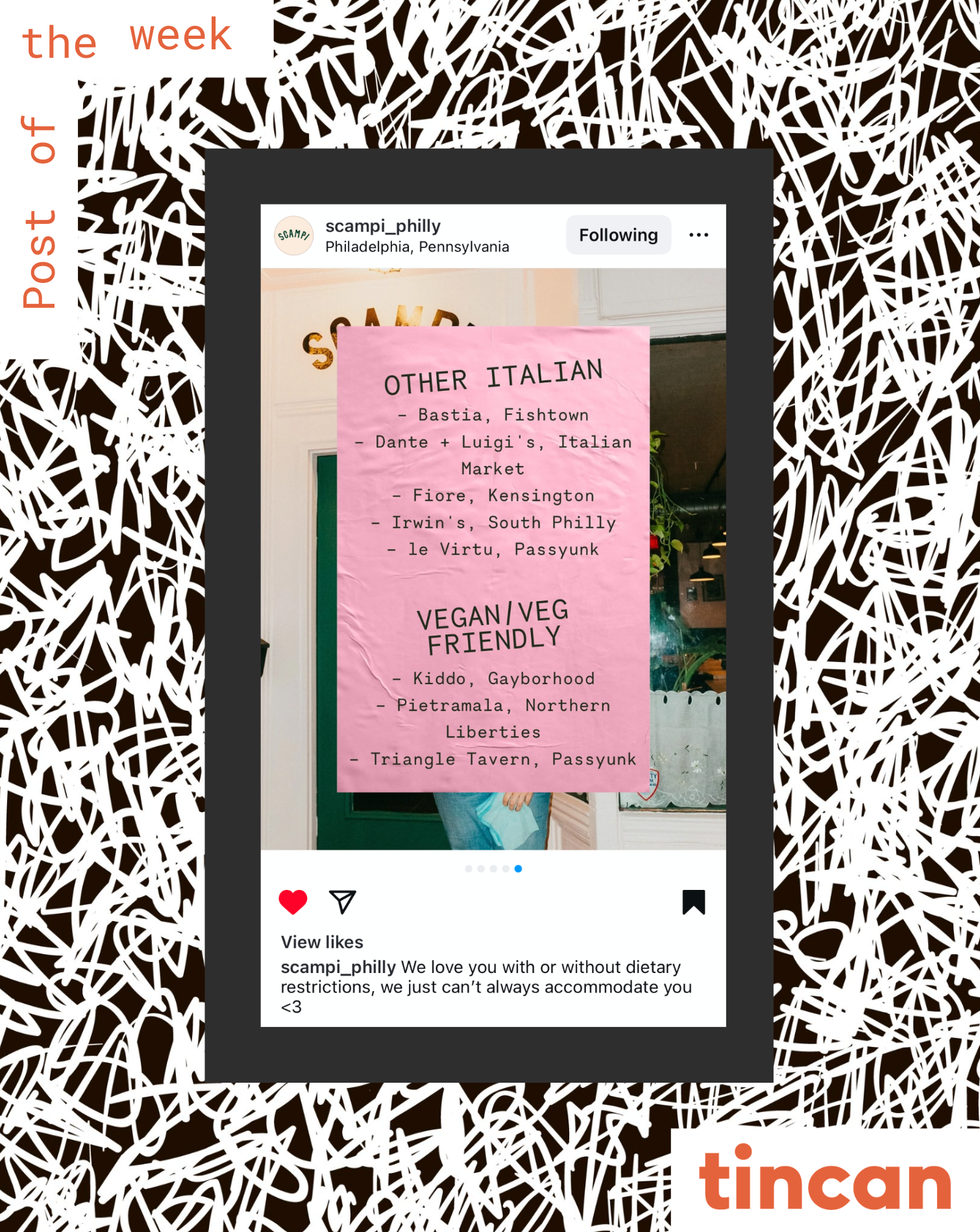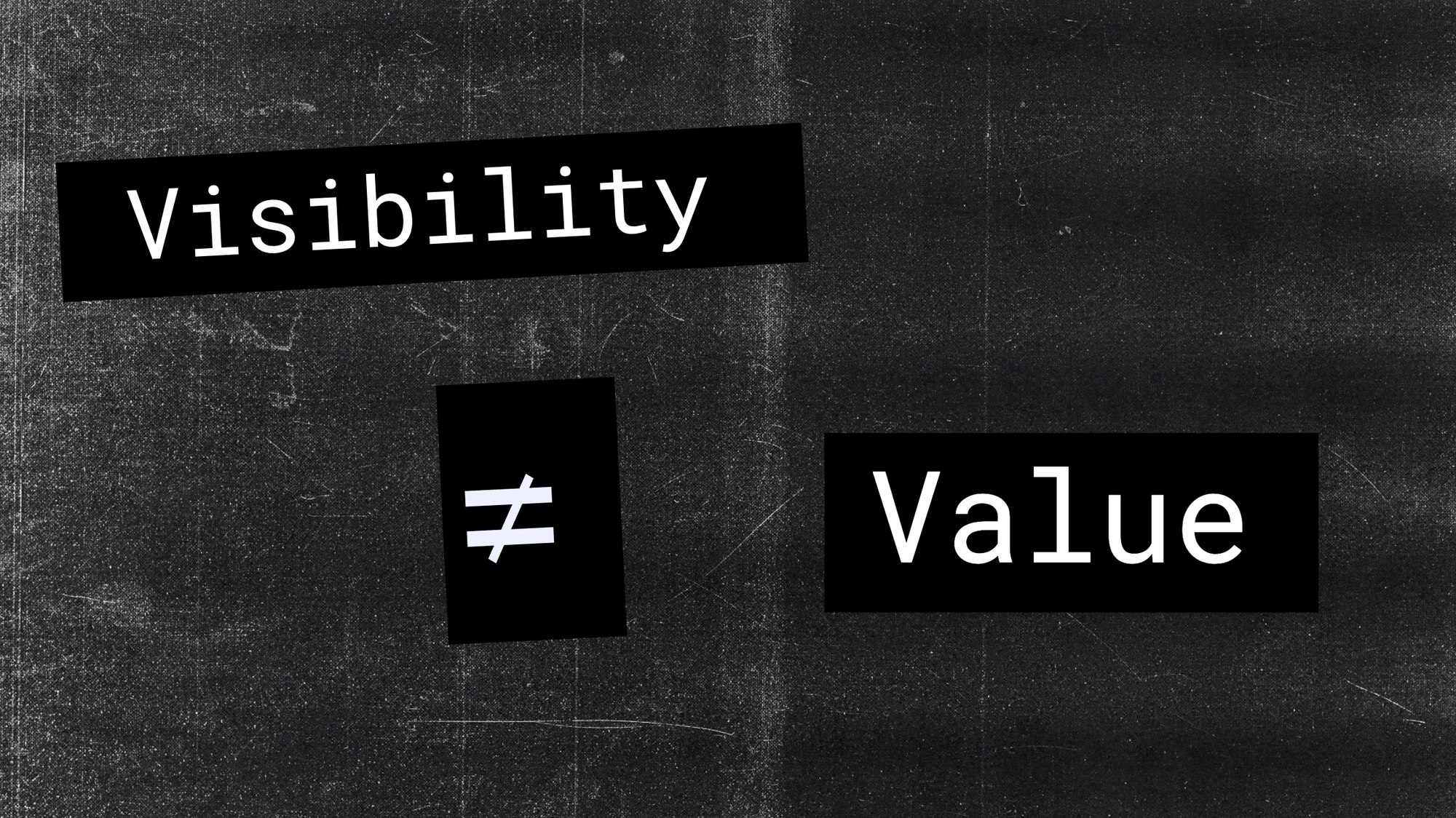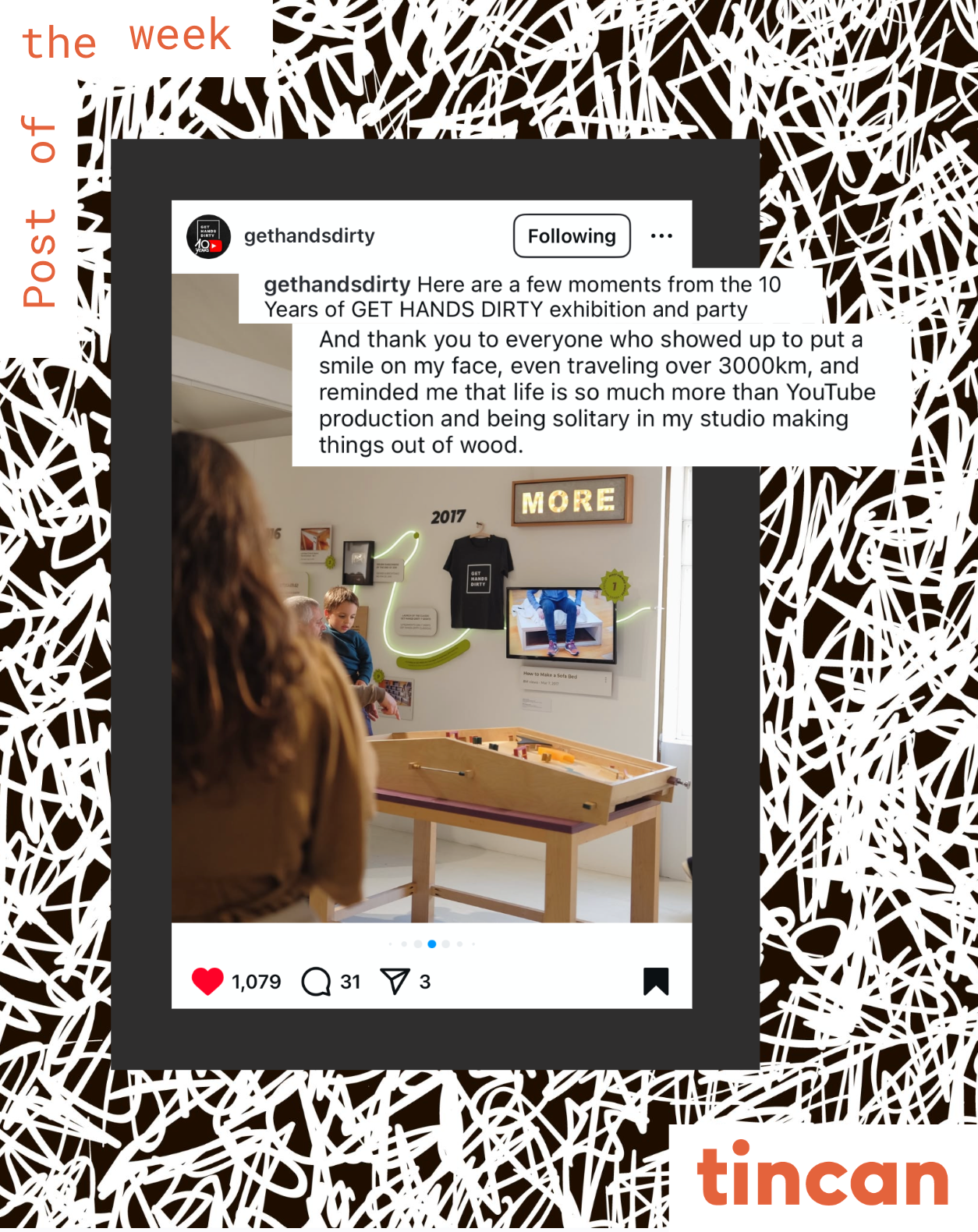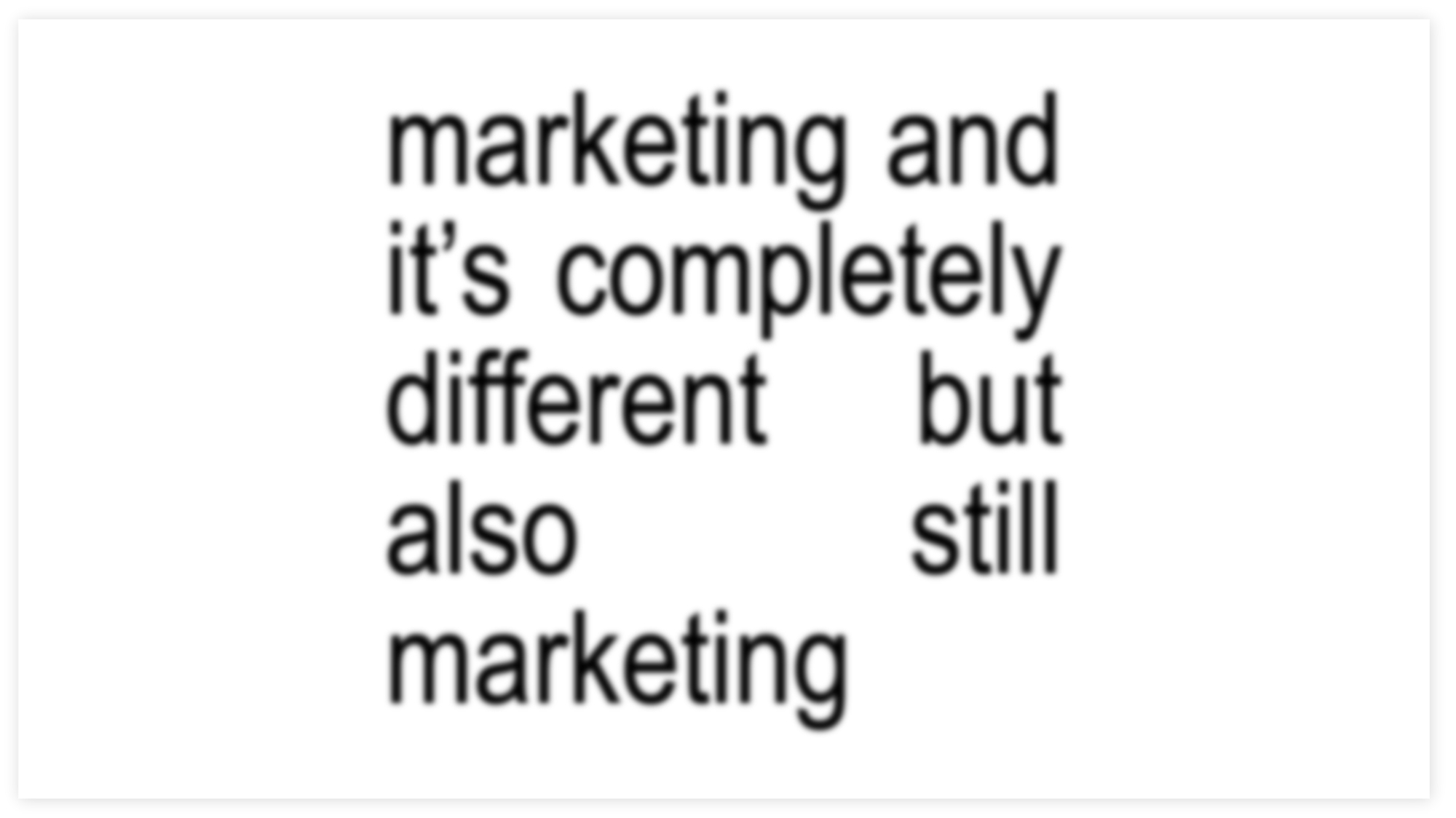
Let’s just say it: reaching people is really hard right now.
There’s too much noise. The news is chaos. The feeds are trash. Most people are either burned out, tuned out, or actively avoiding the internet altogether. And still, we’re expected to show up, promote what we’re doing, and somehow make it feel good and human and worthy of a human being’s attention.
In response to this, there’s been a growing case to be made for going rogue. Smaller and more real. Like: zines, posters, in-person events, or really good websites. While I’m loving the direction that things are headed, I’m also realistic that none of that scales easily or makes it easy for strangers to discover it. I will definitely be experimenting with these alternatives, but I’m also not jumping ship yet from Instagram or LinkedIn—at least until I’ve got enough momentum to operate differently. Maybe you feel the same.
But here’s the thing: before a platform, or a strategy, or a material is even on your mind, you’ve got to think about who you’re talking to. You’ve got to find your people. Carving a niche for yourself and building your content for them is key to connection now. It’s why Trump won. It’s also how Bernie and AOC and Zohran have managed to build momentum. And it’s how Charli xcx became a mainstream star: by not chasing the mainstream.
Whether or not you’re into her punky electropop music, Charli’s Brat era was a full-blown cultural moment. But it wasn’t a lucky viral moment, it was the result of deep intentionality and years of groundwork—and her approach offers us a lot to learn from as small brands.
Build for the niche
Before she even recorded anything, Charli met with her label and laid out a full manifesto that detailed the album’s artistic vision and how she intended for it to connect with fans. She wasn’t just hoping to drop songs, she was building a world that her fans could fully inhabit. In a October 2024 interview with Zane Lowe, she even admitted that the marketing for her albums can steal her focus more than the music (which is probably an exaggeration but it does show her level of commitment to the business side of the things).
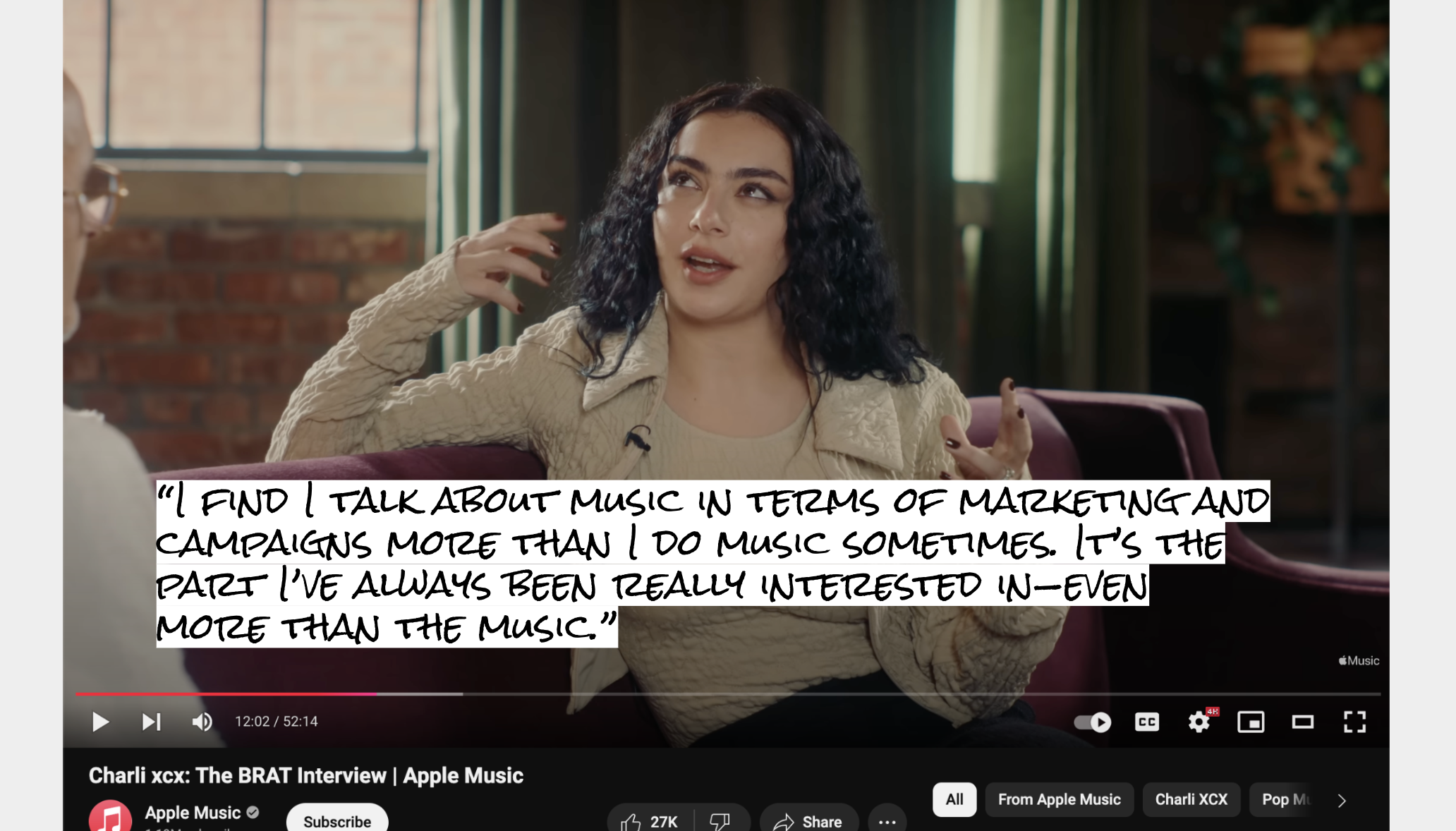
Before she even recorded anything, Charli met with her label and laid out a full manifesto that detailed the album’s artistic vision and how she intended for it to connect with fans. She wasn’t just hoping to drop songs, she was building a world that her fans could fully inhabit. In a October 2024 interview with Zane Lowe, she even admitted that the marketing for her albums can steal her focus more than the music (which is probably an exaggeration but it does show her level of commitment to the business side of the things).
Her deep level of devotion to the core identity of the album is what made the final idea stick. Fast forward to the fall of 2024, and her creative director Imogene Strauss told Vulture, the album took on a life of its own:
“We couldn’t control it anymore. We lost our baby, in a weird way.”
And that’s the goal, kind of. When your audience starts running with it—posting, resharing, making memes, crafting their own narratives around your work—that’s how you know you’ve done it. It’s bigger than you now. Whether or not you’re looking for rampant growth like that, to even get to the intersection of growth, you have to build for your core community.
Charli didn’t make Brat for everyone. She made it for her core fans: the (mostly queer) club kids who’ve been riding with her since day one. The album builds on years of lore from her previous albums. Fascinatingly, there’s nothing about Brat that’s super new thematically. Since its release, I’ve had the pleasure of doing deep dives into all of her old albums, and it’s amazing how sonically and conceptually consistent she’s been for her whole career. Brat wasn’t a departure from her previous ways; it was a full-throated embrace of all the things that she’s already been doing. By committing to her core, she created something that drew in everyone else. In her words:
“After serving the niche, a kind of monoculture moment happened.”
This shift reveals the essence of modern marketing: it’s not about throwing something out there and hoping it sticks, nor is it about following the rules from previous success stories—it’s about listening, inviting people in, and engaging them in the process. Today’s audiences want more than bite-sized entertainment; they want connection. This is where the real magic happens. Not in chasing mass appeal, but in focusing on a core audience. Start niche, build something special, and let it scale itself.
When the Niche Goes Nuclear
We saw this play out beautifully in the wild. When the “Kamala IS brat” tweet took off in July of 2024, it launched both Charli and Kamala into a shared spotlight. Dozens of smaller brands and creators joined in too—not just copying the brat aesthetic for clout, but using it to express their own identity.
Some highlights from my personal feed:
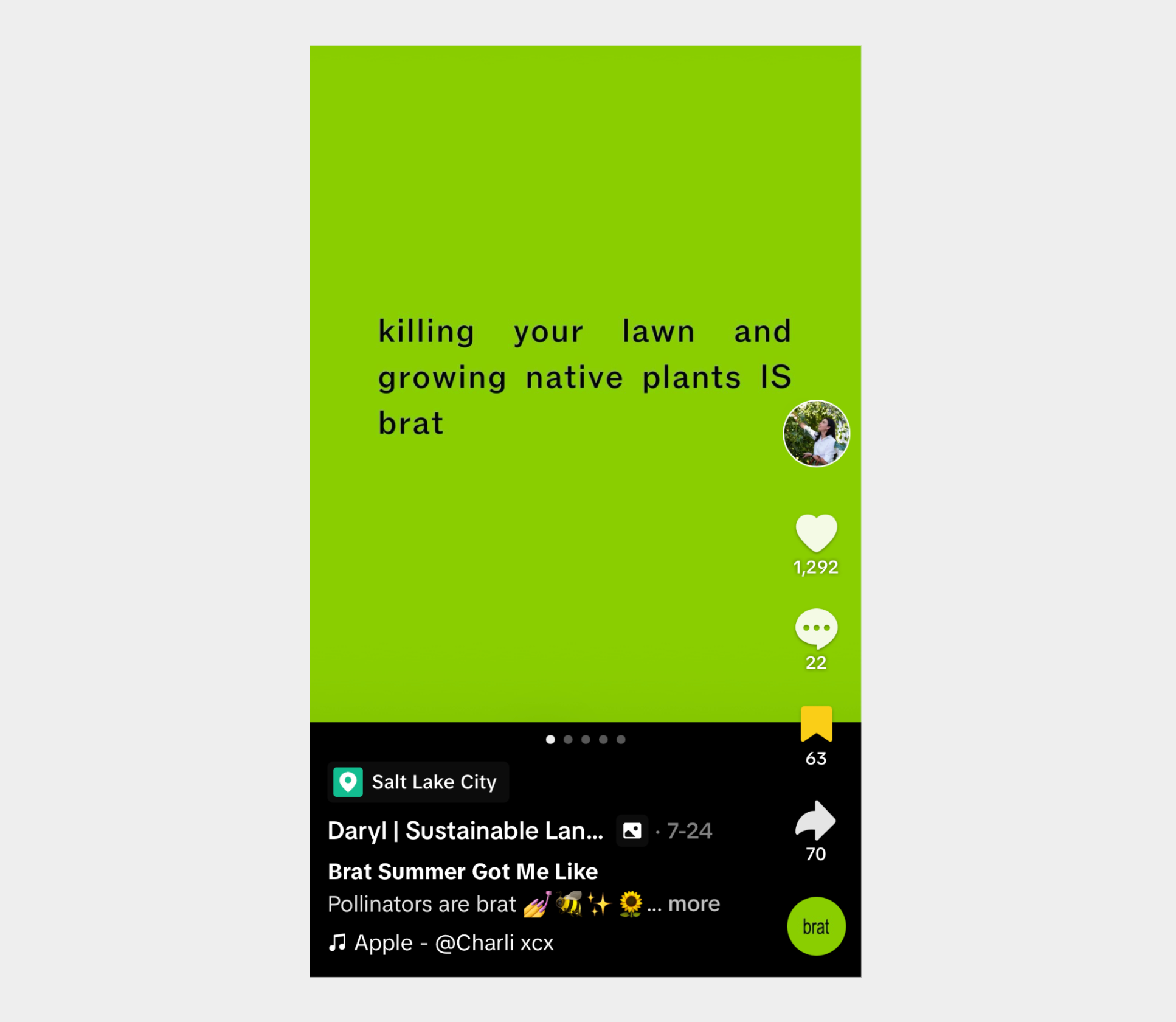
Daryl Lindsey of Yard Farmer nailed the ethos with: “killing your lawn is brat.” Iconic.
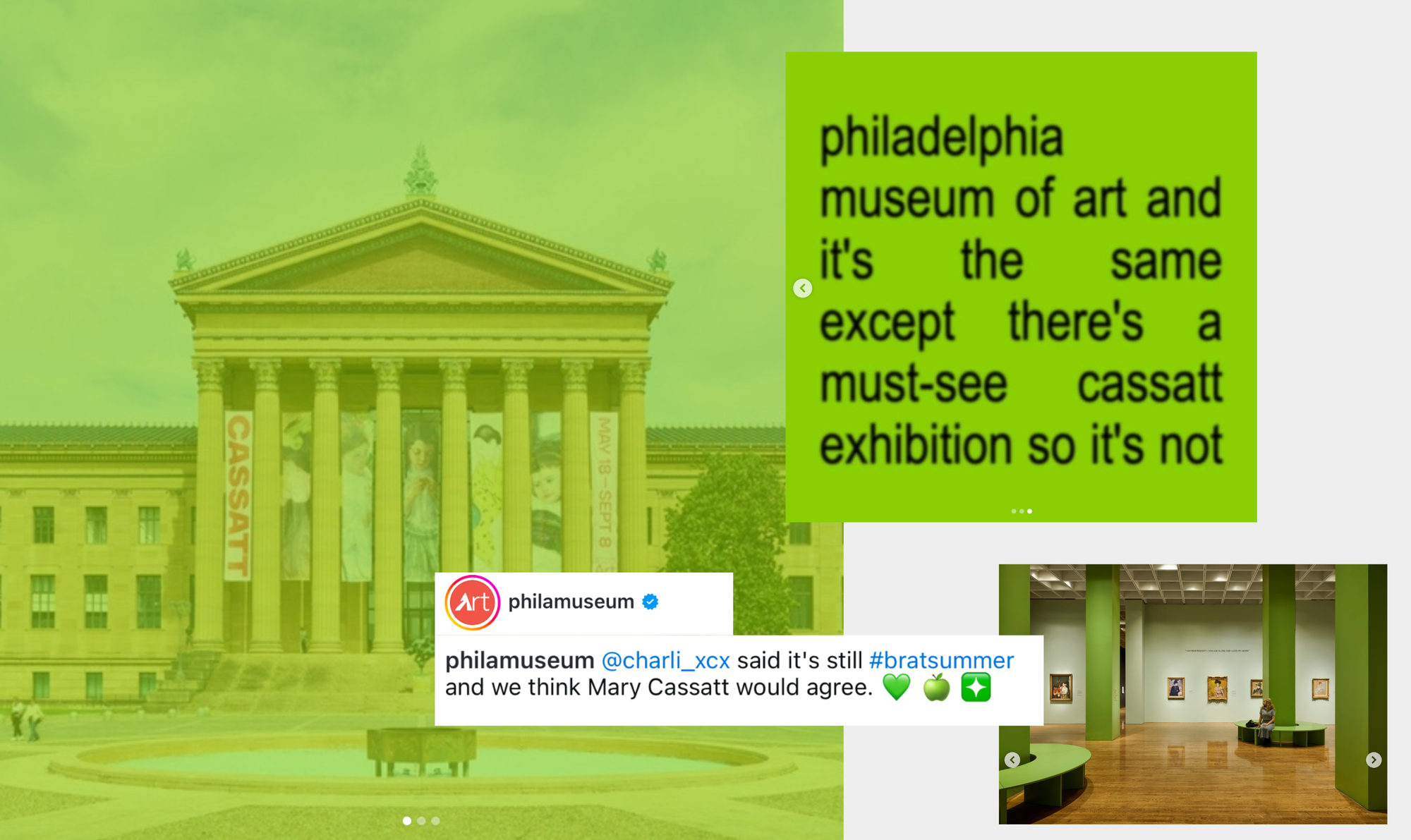
The Philadelphia Museum of Art connected their Mary Cassatt exhibit with brat energy, spotlighting her intimate portrayals of women’s lives as forever brat (so true).
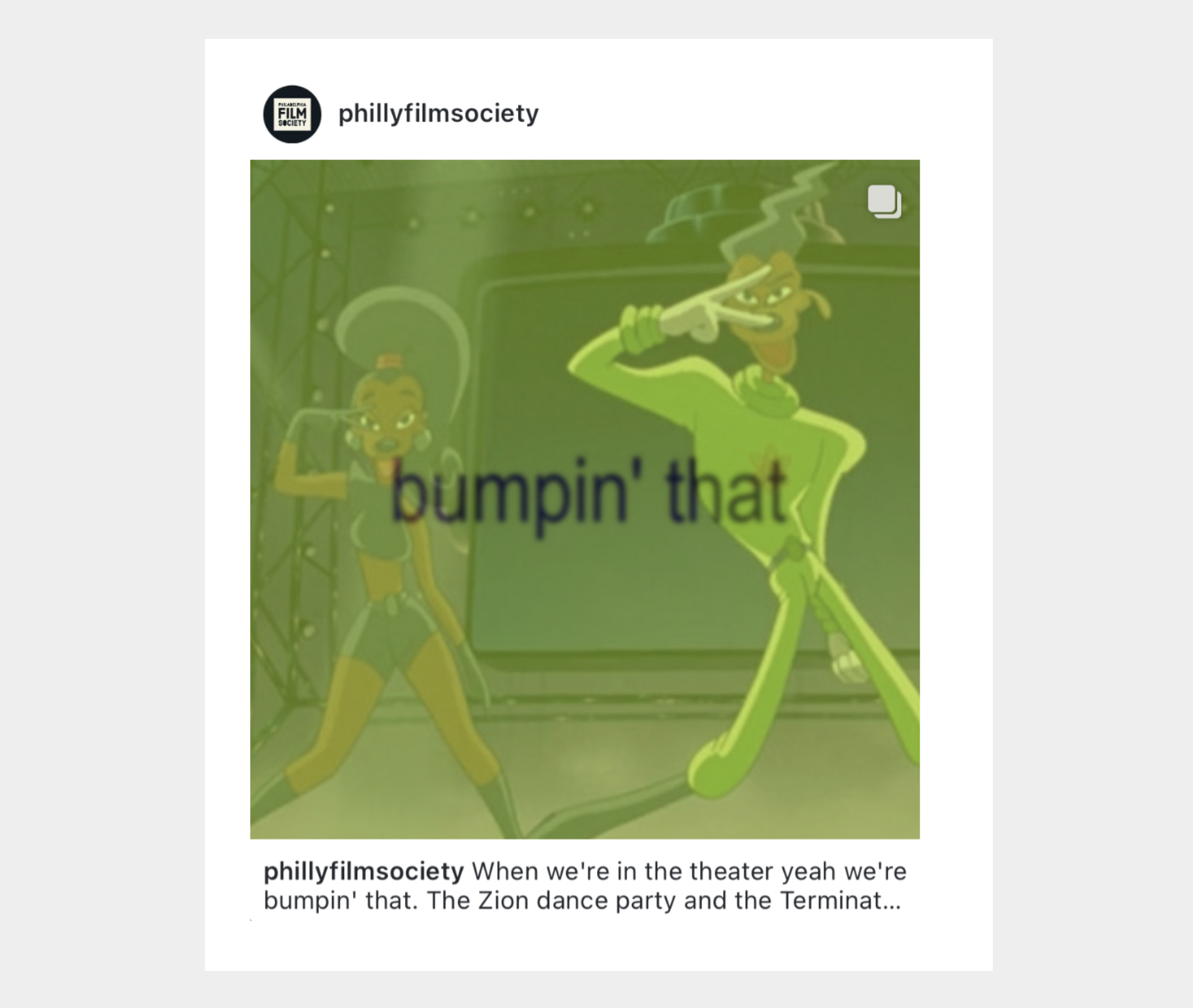
The Philadelphia Film Society layered cult-classic party scenes with bratty phrases.
And one more: Bok Bar, already the brattiest rooftop in Philly, leaned into their summer-only identity, slapping “bok summer” on a classic rooftop scene. Because who needs to be open year-round when you dominate the hottest season?
These weren’t just jokes. They were brands entering a shared language. They took a monoculture moment and infused it with their miniculture identities, aligning themselves with the larger movement. For the audience, it’s affirming when a brand not only knows what you’re into but actively speaks your language. It makes the brand feel relevant and alive.
Ultimately, this deeper engagement is what gives marketing staying power. It’s not about being loudest in the room, it’s about building a community that feels invested, seen, and part of something bigger.
Apply this to your brand
Start with three questions:
- Who are you? Not in the elevator pitch way—but in the what-do-you-care-about, what-are-you-here-to-say kind of way.
- Who are you talking to? What are they feeling? What do they actually want?
- Why should they care? And why now?
You don’t need to go viral. You need to get vivid. You need to build something people can belong to. Because in a sea of polished noise, the thing that resonates isn’t perfection. It’s personality. It’s clarity. It’s specificity. It’s the sense that someone finally gets you.


